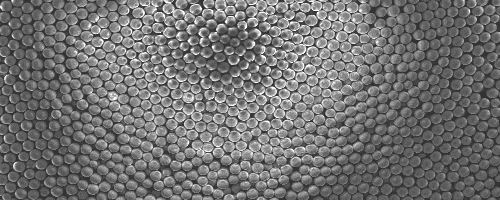Fluorochrome MonoSil Microsphere
Description
Microsphere Composition: Silicon Dioxide
Crystal structure : Amorphous
Fluorescent Composition: Rhodamine B (orange fluorescence;
Excitation/Emission=310/575nm)
Form : Aqueous dispersion
Approximate Concentration (W/V): 5% solids
Sodium Azide Concentration :
50 ppm
Surfactant (W/V): <0.1% or None
Physical Data
Nominal Diameter(micron) : 2, 3, 4, 5, 6, 7, 8, 9, 10, 11, 12
Density : 1.9 to 2.3 g/cm3
Refractive Index: 1.40 to 1.46 @ 589 nm,
25℃
Physical and Chemical Properties
Hydrophilic surface, possess many silanol functional groups on the surface, which can be used for a covalent attachment of other ligands; Stable in organic solvents, Soluble in strong bases and in hydrofluoric acid.
Example of SEM Image
5.5um Silica Microsphere
Example of Fluorescence Microscopy Image
Fluorescence Emission Spectra of Microsphere
Storage and Handling
Aqueous dispersions of silica particles have excellent stability. Storage at room temperature is possible without bacterial growth. Particles can be washed with organic solvent, air dried and autoclaved. Dispersions of silica particles can be frozen.
Application
1. Silica particles find wide applications as model systems in medicine, biochemistry, colloid chemistry, and aerosol research;
2. Optical Tweezer Manipulation;
3. The fluorescent particles can be used as standards (e.g. in flow cytometry, confocal laser scanning microscopy, light scattering instruments) as well as tracers in environmental science, flow visualization and measurements in gases and liquids like Laser Doppler Anemometry (LDA), Particle Dynamics Analysis (PDA), Particle Image Velocimetry (PIV), Digital Imaging Velocimetry (DIV) and Laser Speckle Velocimetry (LSV); In applications with a high background light level, fluorescent seeding particles can significantly improve the quality of vector maps from PIV and LDA measurements.



